RadMini rear wheel removal guide
The video and instructions below will show you how to remove and reinstall the rear wheel on a 2017 RadMini, but the process will be similar for most RadExpand and RadMini models.
Tools Needed:
- Wooden blocks to prop up the bike
- Flat side cutters
- 4 mm Allen wrench
- 18 mm wrench
- 10 mm wrench
- A camera
- A torque wrench
- A few zip ties
- Nitrile gloves (optional)
Remove the Wheel
- Get the bike ready for maintenance. Turn off the bike, remove the battery, and press and hold MODE or Power to discharge any remaining power. The display may flash on briefly.
- Shift the bike into 7th gear. Lean the bike on the kickstand, rotate the pedals forwards, and press the plus button on the shifter to 7th gear at the same time, so the chain moves to the smallest cog.
- Flip over the bike. Set the handlebar grips on the blocks to protect the LCD display from damage while performing maintenance.
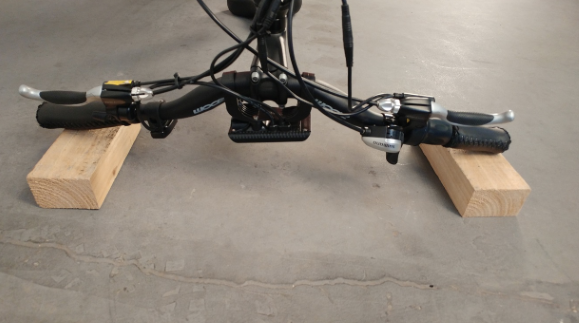
- Locate and unplug the motor cable. The motor cable is located by the chainstay. Snip zip ties as needed and pull the connector directly apart, without twisting, to unplug.
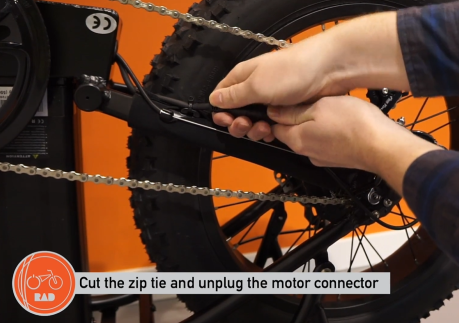
- Remove the torque arm bolt. Use a 4 mm Allen wrench or Phillips head screwdriver (depending on model year) to remove the torque arm bolt and washers. If needed, remove the bashguard. Keep the washers installed on the bolts and set the hardware and bashguard aside.
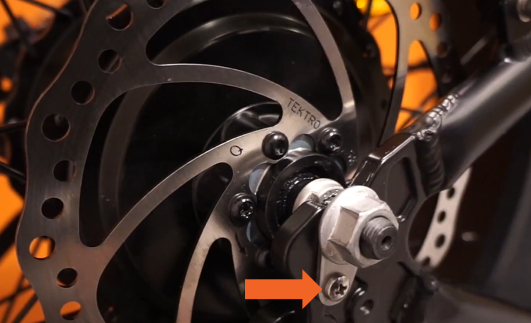
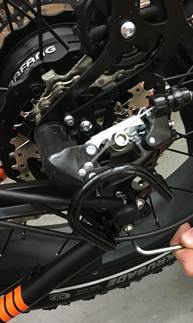
- Loosen the axle nuts. Use an 18 mm wrench to loosen (but not remove) the axle nuts just enough so the wheel can be removed. Do not remove the axle nut or washers completely because the orientation of the hardware is very important for safety.
Note: We recommend taking a photo of the order of the washers and additional hardware on the motor axle to help with reinstallation.
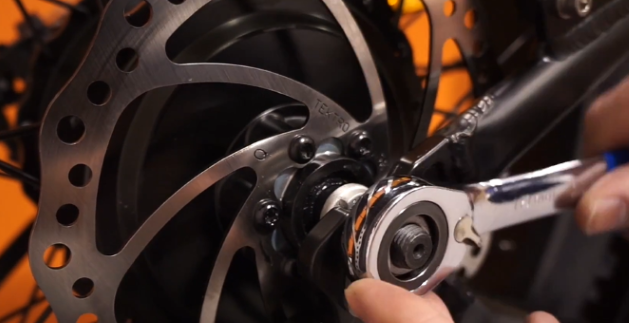
- Pull the derailleur body toward the back of the bike and remove the wheel. If the rear wheel is difficult to remove, stabilize the bike and rock the wheel side to side while lifting. Lift the chain off of the cog. Be sure not to touch the brake rotor with bare hands.
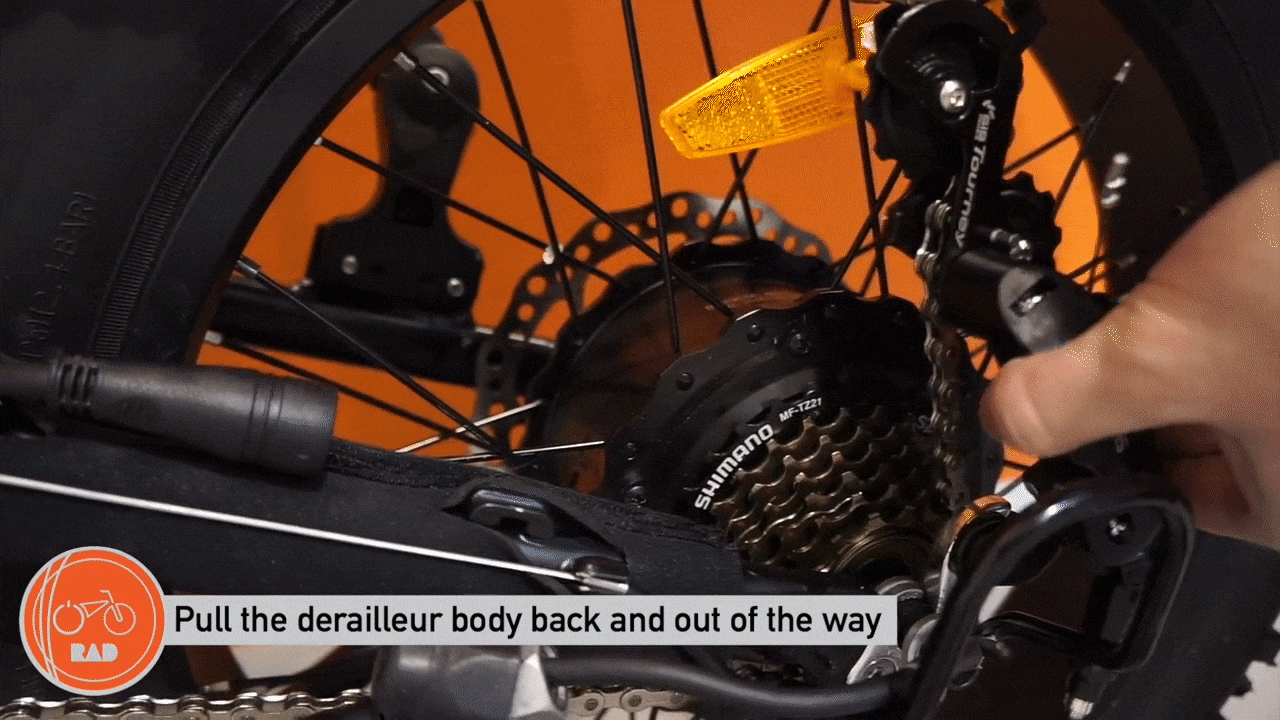
- Perform necessary maintenance. Once the rear wheel is removed, change the tube or tire, swap in a new wheel, etc.
Reinstall the Wheel
- Ensure all hardware is ready to be installed in the correct order. Refer to the images below, which apply to most models, or the photo taken in a previous step.
Brake rotor side of the wheel:
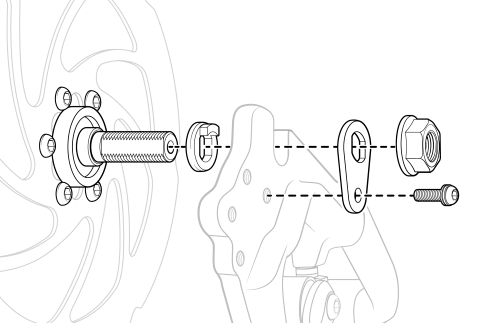
Derailleur side of the wheel:
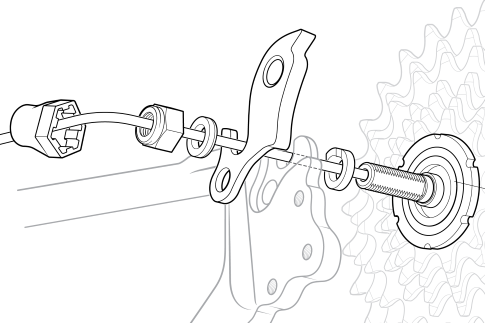
- Reinstall the wheel. Pull back on the derailleur body and route the chain onto the smallest cog, then place the wheel in the dropouts.
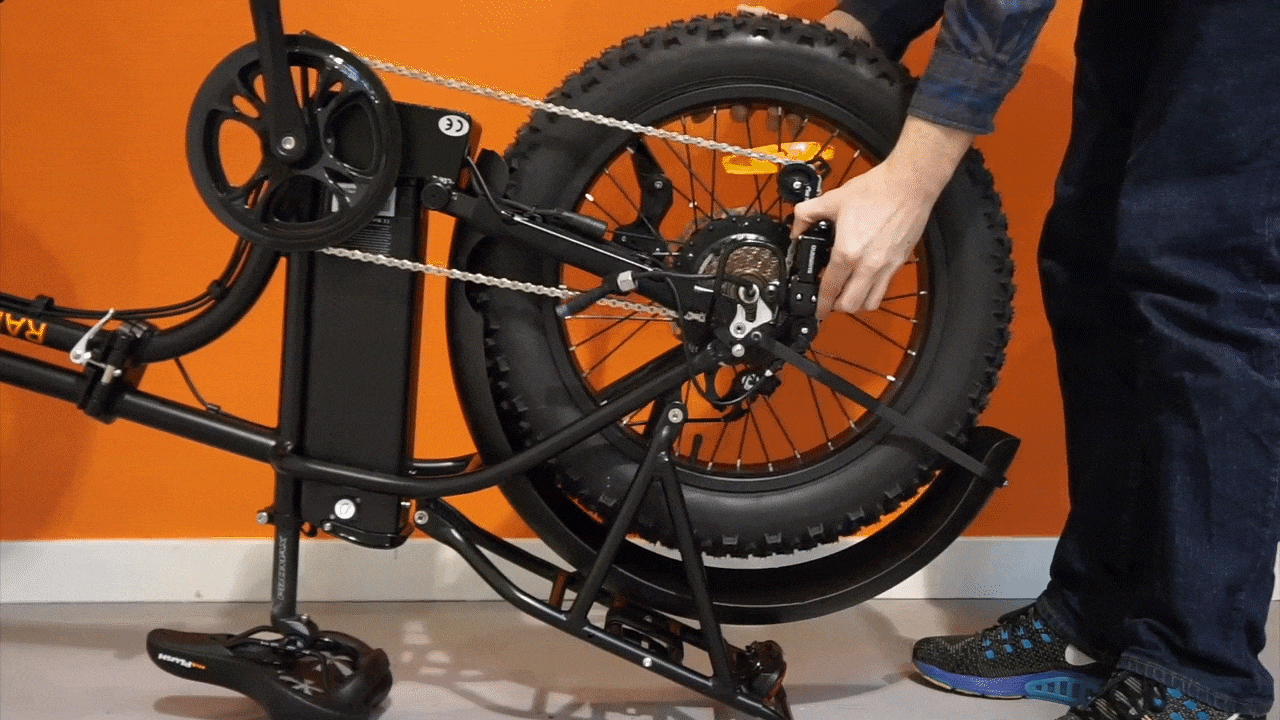
- Check that the torque washer is in the correct position and the brake rotor is in position. Use the photo taken for reference, if needed. The brake rotor will slide between the brake pads in the brake caliper. If there is a gap between the axle and the dropout, use a 10 mm wrench to carefully turn the axle to line up the flat sides with the sides of the dropouts (as shown in the video), and adjust the wheel so it is fully seated in the dropouts.
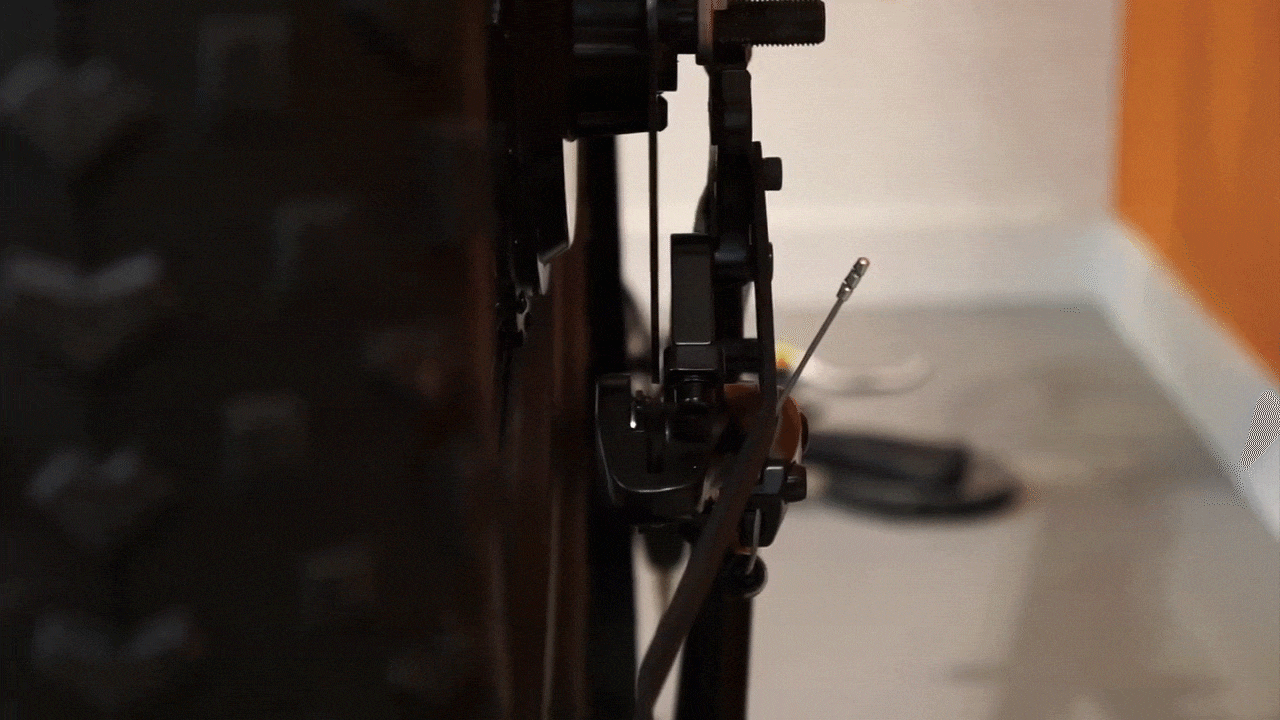
- Install the torque arm bolt. On the brake rotor side, install the torque arm bolt and use a 4 mm Allen wrench torque the bolt to 2-3 Nm. Reinstall the bashguard, if removed.
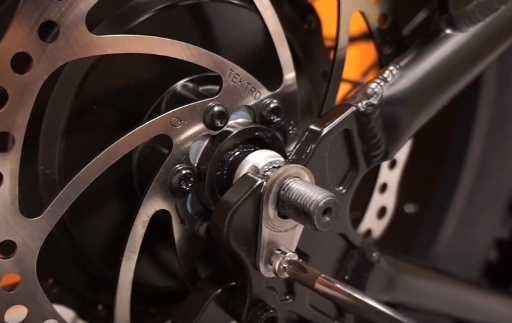
- Tighten the axle nuts. Use an 18 mm wrench to tighten the axle nut on the brake rotor side first, then check that the derailleur side is still in place in the dropout. Use a torque wrench with crow foot bit to torque both axle nuts to 40 Nm.
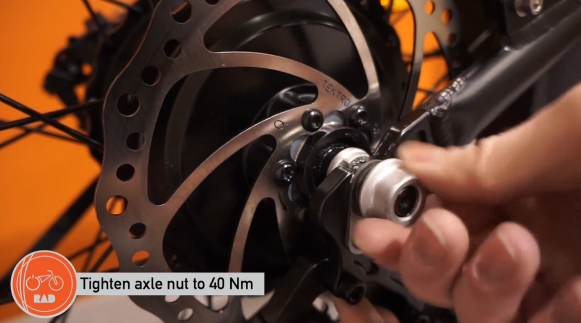
- Plug in the motor connector. Line up the internal notches and pins (and external arrows), and press each side directly together, without twisting, to reconnect. Replace the zip tie and trim it to be flush and smooth.
- Reinstall the battery and test the bike fully before riding.
